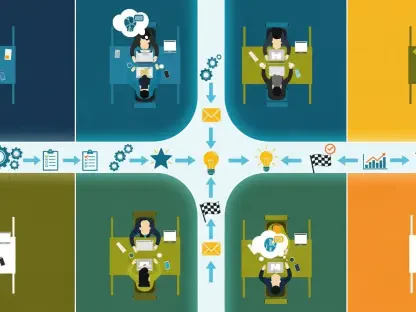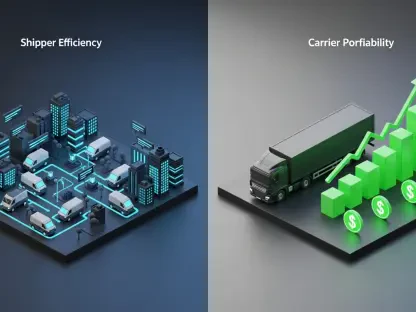Today, we’re thrilled to sit down with Marco Gaietti, a veteran in the field of business management with decades of experience in management consulting. Marco’s expertise in strategic management, operations, and customer relations makes him the perfect person to shed light on the evolving role of HR in navigating the challenges and opportunities of the future. In this conversation, we’ll explore critical HR priorities for 2026, including the integration of AI in human resources, the reshaping of talent strategies, and how leaders can adapt to constant change in today’s dynamic business landscape.
How do you see AI and talent becoming central focuses for HR leaders as we approach 2026?
I think AI and talent are becoming central because they’re intertwined with how organizations will stay competitive in a fast-changing world. AI is no longer just a tech tool; it’s reshaping how we work, from recruitment to employee engagement. Meanwhile, talent remains the heart of any business—finding, retaining, and developing the right people is critical. By 2026, HR leaders will need to leverage AI to better understand and predict talent needs while addressing challenges like skill gaps and employee burnout amid ongoing disruptions.
What specific challenges do you anticipate in 2026 that make AI and talent such pressing priorities for HR?
One major challenge will be the rapid pace of technological adoption—AI is evolving so quickly that many organizations risk falling behind if they don’t integrate it effectively into HR processes. There’s also the issue of workforce readiness; employees may not have the skills needed for AI-driven roles, creating a gap. On top of that, constant external changes—like economic shifts or regulatory updates—will put pressure on HR to adapt talent strategies dynamically. These challenges aren’t just operational; they’re cultural, requiring a mindset shift across the organization.
What does an HR-focused AI strategy mean to you, and how does it differ from a broader company-wide AI plan?
An HR-focused AI strategy is tailored to the unique needs of managing people—think talent acquisition, performance tracking, or personalized learning programs. Unlike a company-wide AI plan, which might prioritize operational efficiency or product innovation, an HR strategy zeros in on enhancing the employee experience and optimizing workforce potential. For instance, while a broader plan might automate customer service, HR’s focus could be on using AI to predict turnover risks or identify high-potential employees. It’s about aligning tech with human-centric goals.
Can you share some practical steps HR leaders can take to build an effective AI strategy for their function?
First, they need to assess their current HR processes to identify where AI can add the most value—maybe it’s streamlining onboarding or improving diversity in hiring through unbiased algorithms. Next, they should invest in training, ensuring their teams understand AI tools and aren’t intimidated by them. Partnering with IT and data experts to ensure ethical use and data privacy is also key. Finally, start small with pilot projects to test AI applications, learn from the results, and scale up gradually. It’s about building confidence and capability step by step.
How do you think AI could transform day-to-day HR operations in the coming years?
AI has the potential to revolutionize routine tasks like screening resumes, scheduling interviews, or even answering basic employee queries through chatbots. Imagine an HR team freed up from paperwork to focus on strategic initiatives like employee development or culture-building. AI can also provide real-time insights, like flagging when an employee might be disengaged based on data patterns. It’s not about replacing the human touch but enhancing it—making HR more proactive and personalized in how they support the workforce.
The concept of reimagining work and processes with AI is gaining traction. What does that look like in the HR space?
Reimagining work with AI in HR means rethinking how every process can be more efficient and impactful. It’s about asking, ‘How can technology make this better for our people?’ For example, performance reviews could shift from annual events to continuous feedback loops powered by AI analytics. It also means redesigning roles—some jobs might disappear, but new ones focused on managing AI systems or interpreting data will emerge. Ultimately, it’s about creating a workplace where technology and human potential amplify each other.
How can HR leaders encourage their teams to embrace these transformative changes driven by AI?
It starts with clear communication—explaining why AI is being introduced and how it benefits everyone, not just the bottom line. Training programs are crucial to build comfort with new tools; people fear what they don’t understand. HR leaders should also lead by example, showing openness to change themselves. Celebrating early wins, like how AI saved time on a project, can build momentum. Most importantly, involve the team in the process—let them give input on how AI is implemented so they feel ownership over the change.
There’s a lot of talk about a ‘now-next’ talent strategy. Can you explain what that approach entails for organizations?
A ‘now-next’ talent strategy is about balancing immediate needs with future planning. ‘Now’ focuses on the next 12 months—ensuring you have the right people in place to meet current goals, addressing skill shortages, or boosting engagement. ‘Next’ looks one to three years ahead, anticipating how roles might evolve with tech or market shifts and preparing talent pipelines accordingly. It’s a dual lens that keeps organizations agile today while building resilience for tomorrow. Both parts are critical to avoid getting stuck in a reactive mode.
What are some practical ways HR can juggle short-term talent needs with long-term goals?
For short-term needs, HR can focus on quick upskilling programs or targeted hiring to fill immediate gaps. Cross-training employees also helps with flexibility. For long-term goals, they should invest in succession planning and build partnerships with educational institutions to shape future talent. Using data analytics to forecast skill trends can bridge both—identifying what’s needed now and what will be critical later. The key is regular check-ins to adjust plans as priorities shift, ensuring neither short nor long term gets neglected.
The idea of ‘routinizing change’ for leaders is intriguing. How can HR help leaders view change as a normal part of their role?
HR can help by reframing change as an ongoing process, not a one-off crisis. This means embedding change management into leadership training, teaching skills like adaptability and emotional intelligence as core competencies. Regular workshops or discussions about navigating uncertainty can normalize it. HR should also provide tools—like frameworks for decision-making during change—that make it feel manageable. It’s about shifting the mindset from ‘this is extra work’ to ‘this is just how we operate in a dynamic world.’
What advice do you have for our readers on preparing for the HR challenges and opportunities of 2026?
My advice is to embrace curiosity and adaptability. Stay informed about trends like AI and evolving talent needs—don’t wait for challenges to hit you. Build strong relationships across your organization to foster collaboration during change. Invest in learning, whether it’s understanding new tech or sharpening your strategic skills. Most importantly, prioritize your people—technology is powerful, but it’s the human connection that drives lasting success. Start small, experiment, and be ready to pivot as the landscape evolves.









